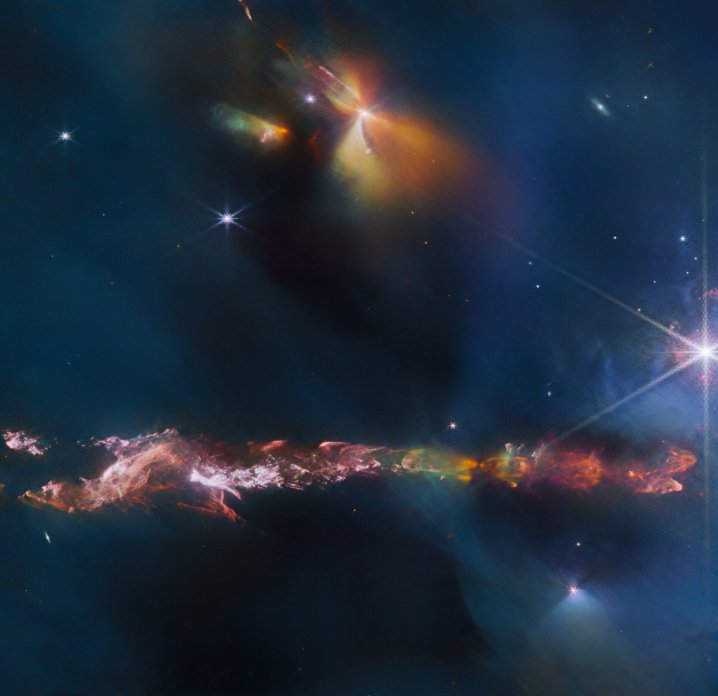A new image of the Herbig-Haro object captured by the James Webb Space Telescope shows a dramatic outflow from a young star. These luminous flares are created when stellar winds rush in the opposite direction of a newborn star, as jets of gas hit nearby dust and gas at incredible speeds. These objects can be very large, up to several light years across, and they shine brightly in the infrared wavelengths at which James Webb operates.
This image shows the Herbig-Haro object HH 797, which is located close to the star cluster IC 348, and also close to another Herbig-Haro object captured by Webb recently: HH 211.

The image was taken using Webb’s Near Infrared Camera (NIRCam) instrument, which is well suited to probing young stars, Webb scientists explained in a statement, : “Infrared imaging is a powerful way to study newborn stars and their outflows, because the youngest stars are still embedded in the gas and dust that formed them. Infrared emissions from the star’s outflow penetrate the obscuring gas and dust, making the Herbig-Haro object ideal for observations with Webb’s sensitive infrared instruments.
“Molecules excited by turbulent conditions, including hydrogen and carbon monoxide molecules, emit infrared light that Webb can collect to visualize the structure of the outflow. NIRCam is very good at observing hot (thousands of degrees Celsius) molecules excited by shocks.”
The Herbig-Haro object is unusual because scientists initially believed it was created from a single young star, like most similar objects. But these detailed observations reveal that there are actually two sets of outflows, originating from a pair of stars at the center.
In addition to the bright ripples of Herbig-Haro objects at the bottom of the image, it is also expected that there will be more new stars being born at the top of the image. The bright spots in shades of yellow and green are believed to be home to two young protostars.
Editor’s Recommendations